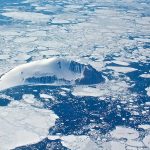 November 27, 2018 10:32 am
Published by Climate Extremes
November 27, 2018 10:32 am
Published by Climate Extremes
Bella Blanche writes about spending time on the vast Macfarlane Station in Tambo, Queensland and introduces a methodology to assess risks posed by climate change, and the vulnerability of the native rangeland resources located west of the Great Dividing Range.
 November 23, 2018 11:49 am
Published by Climate Extremes
November 23, 2018 11:49 am
Published by Climate Extremes
A new study explores a new, probabilistic way of prediction of stratospheric warming events in the Northern Hemisphere based on dynamical arguments produces meaningful forecasting information around ten times longer than traditional model forecasting.
 November 6, 2018 1:23 pm
Published by Climate Extremes
November 6, 2018 1:23 pm
Published by Climate Extremes
The key measures are the "Wet Bulb Globe Temperature" often used to screen for dangerous heat at sporting events and in workplaces, the "Wet Bulb Temperature" beloved of weather geeks, and "Apparent Temperature" quoted to the public by weather services. The bottom line is that the closer we are pushed to our physiological limits by extreme heat, the more important humidity becomes.
 November 6, 2018 9:49 am
Published by Climate Extremes
November 6, 2018 9:49 am
Published by Climate Extremes
Urban Climate and Energy Model (UCLEM) is a new climate model focused on Australian conditions that integrates energy use and human behaviour to generate accurate representations of urban climates.
 October 23, 2018 2:28 pm
Published by Climate Extremes
October 23, 2018 2:28 pm
Published by Climate Extremes
An international group of scientists has now forecast the likelihood global warming will exceed 1.5C over the next 5 years. This is one of the thresholds of the UNFCCC’s Paris Agreement, which aims “to strengthen the global response to the threat of climate change by keeping a global temperature rise this century well below 2°C above pre-industrial levels and to pursue efforts to limit the temperature increase even further to 1.5°C”.
 October 19, 2018 1:20 pm
Published by Climate Extremes
October 19, 2018 1:20 pm
Published by Climate Extremes
In 2016, Centre of Excellence for Climate Extremes researchers and colleagues measured Southern Ocean INPs for the first time in over four decades. The numbers of these particles were extremely low compared to other oceans and 100 times lower than the previous Southern Ocean measurement program conducted in the 1970s.
 October 17, 2018 10:00 am
Published by Climate Extremes
October 17, 2018 10:00 am
Published by Climate Extremes
If you are a stormchaser or just someone who loves the theatre of wind, lightning, heavy rain and hail when a storm whips through, then you are perfectly placed to help climate science with the new WeatheX app.
 October 9, 2018 12:50 pm
Published by Climate Extremes
October 9, 2018 12:50 pm
Published by Climate Extremes
Deep ocean reefs are likely to transform with global warming bringing together species from temperate and tropical waters that may have never coexisted before, according to new research published in Nature Climate Change.
 October 8, 2018 2:53 pm
Published by Climate Extremes
October 8, 2018 2:53 pm
Published by Climate Extremes
CLEX researchers find that ocean sea-ice models generally agreed on changes to average yearly cycle of freeze and melt in Antarctica, with dynamic processes dominating the sea ice edge and thermodynamic processes dominating the interior of the sea ice pack. However, the models disagreed about the trends of sea ice volume.
 October 8, 2018 12:09 pm
Published by Climate Extremes
October 8, 2018 12:09 pm
Published by Climate Extremes
An unusually strong East Australian Current extension leads to an increased probability of marine heatwave days around Tasmania. Conversely, a strong Zeehan Current during these seasons decreased the probability of marine heatwave days in this region.










